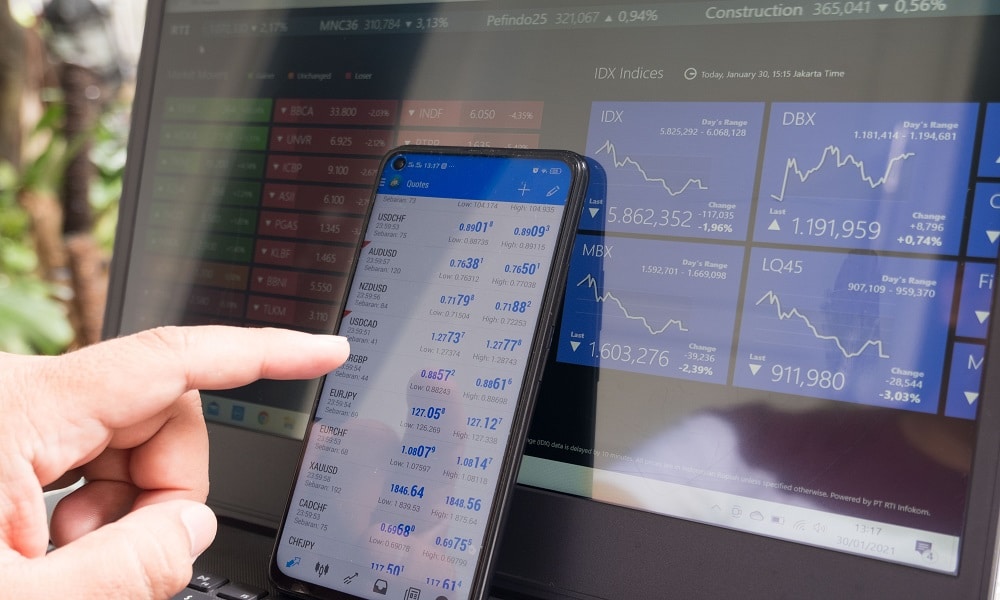Are you interested in taking your financial investments to the next level by trading currencies? Currency markets, or Forex Trading, have been around for centuries and offer a unique opportunity to profit from changes in international currency exchange rates. Despite its long history, many people need to be more informed about how Forex works and what they need to know before entering the market.
In this article, we will delve into all of the basics of Forex Trading, including discussing different strategies that can be used to maximize returns on investment. No matter whether you’re a novice investor looking to break into Forex Trading or an experienced trader seeking further tips and advice – read on.
Defining Forex Trading & Exploring the Market Dynamics
The foreign exchange market, more commonly known as Forex, is the largest financial market in the world that sees trillions of dollars traded daily. Forex involves buying and selling currencies to earn a profit from market fluctuations. It is crucial to clearly understand how the market dynamics operate to make informed trading decisions.
It can be overwhelming to navigate the Forex market, but choosing the right broker can help simplify the process. Experienced traders recommend researching and selecting from the best forex brokers with a proven track record of reliability, security, and competitive pricing. With the help of a reputable broker and a well-built strategy, one could earn profits from the highly volatile market through Forex trading.
Developing a Strategic Plan for Trading in Currencies
Once you understand how the Forex market works, it is time to develop a strategy that will help maximize returns while minimizing risks. Investors use strategies based on their individual risk appetites and financial objectives. Generally, traders apply technical or fundamental analysis when making trading decisions.
Technical analysis involves studying historical price data to identify patterns to make future trading decisions. Beginners and experienced traders can use this type of analysis, which most beginner investors use when entering the Forex market. Fundamental analysis involves studying economic indicators such as GDP growth, inflation, and political events that could affect currency exchange rates.
Understanding Currency Pairs & Leverage Ratios
When trading in Forex, it is essential to understand different currency pairs and the associated leverage ratios. Currencies are traded in pairs as a single unit, e.g., EUR/USD or GBP/JPY, with each currency quoted against its pair (e.g., USD). Leverage ratio refers to how much of a currency you can purchase with a given amount of capital – the higher the leverage ratio, the more you can purchase. Leverage ratios vary depending on currency pairs and brokers but generally range from 1:50 to 1:500.
Understanding how leverage impacts your trading decisions and potential profits/losses is crucial. Utilizing too much leverage carries an increased risk of margin call, where the broker closes out all open positions if the available funds are insufficient to cover potential losses. It is essential to utilize leverage conservatively to minimize risks and maximize returns.
Examining Risk Management Strategies for Forex Trading
Risk management is a crucial part of Forex trading. Investors must recognize the different market risks and develop strategies to mitigate them to maximize profits while minimizing losses. One way to do this is by setting appropriate stop-loss limits, which are predetermined points when transactions should close once declining prices hit the predetermined limit.
Another strategy is diversifying investments across different currency pairs. It can reduce the risk of loss, as diversification spreads the risk across multiple instruments. Investors should also use limit orders when trading in Forex, which is an order that limits the maximum price at which a security can be bought or sold.
Analyzing Fundamental and Technical Analysis Tools
Traders often use fundamental and technical analysis methods to make informed trading decisions. Fundamental analysis includes studying political, economic, and financial conditions to forecast future currency exchange rate movements. When conducting fundamental analysis, it is vital to investigate the countries involved in a transaction, including the government’s budget surplus or deficit, inflation rates, public debt levels, etc.
Technical analysis relies on indicators such as trend lines, moving averages, support, and resistance levels to predict future price movements. By analyzing the historical data of a currency pair, traders can attempt to identify patterns that may indicate future price direction. Traders should also pay attention to news events affecting their currencies – for example, central bank decisions or corporate earnings reports.
Identifying Common Pitfalls & How to Avoid Them
While Forex trading can potentially offer significant returns, a few common pitfalls should be avoided to achieve long-term success. Traders must maintain discipline and not let emotions influence their decisions – fear, greed, and overconfidence can lead to mistakes. Traders should also understand its risks before overtrading or trading on margin.
It is also important to maintain realistic expectations – even the most experienced traders sometimes fail and lose trades. A successful Forex trading strategy requires patience, discipline, and dedication to achieve consistent returns. By avoiding common mistakes and understanding the market dynamics, traders can earn profits from this highly volatile financial market.
Conclusion
The Forex market can be complex and unpredictable, but it can offer potential returns with the right strategy and understanding. By selecting the best brokers, developing a trading plan, understanding currency pairs & leverage ratios, managing risks appropriately, analyzing fundamental & technical analysis tools, and avoiding common pitfalls, traders can potentially turn profits in this highly volatile financial market.


